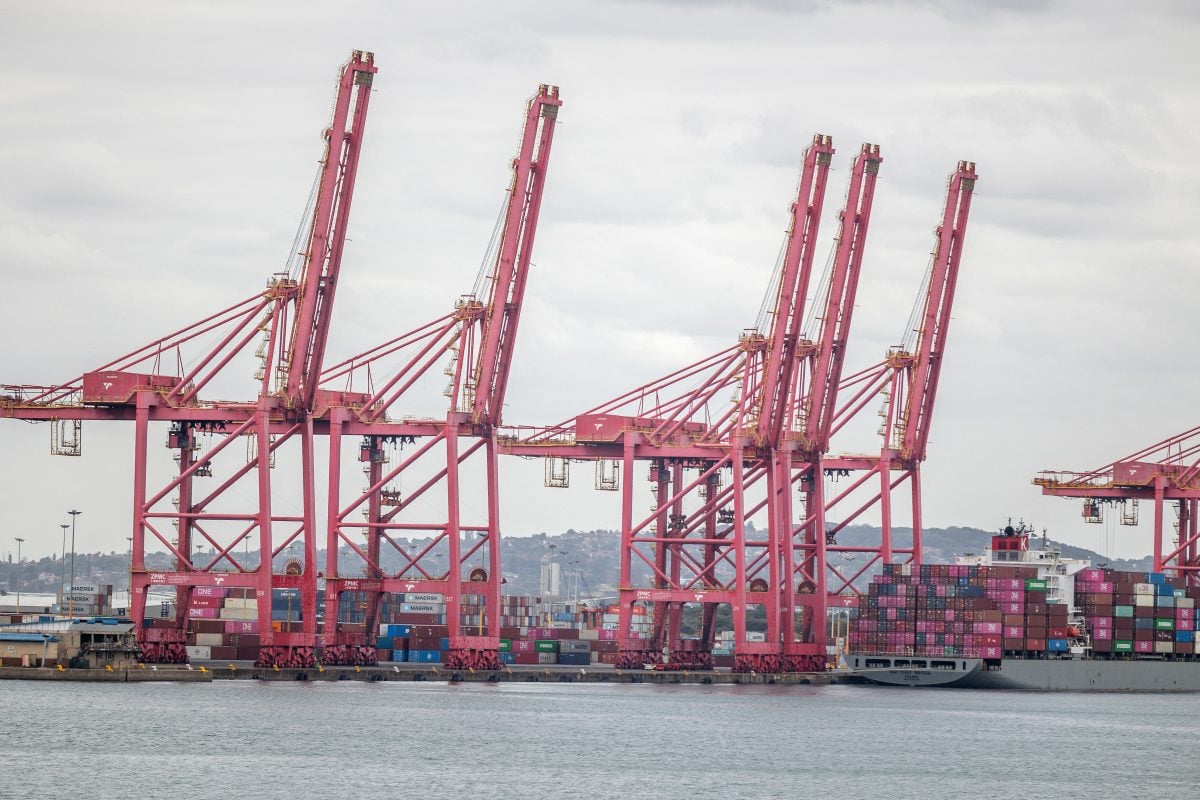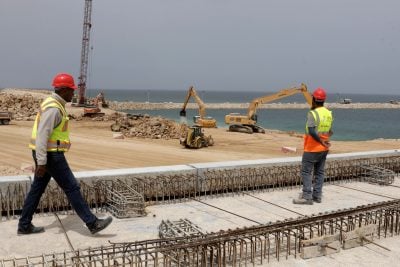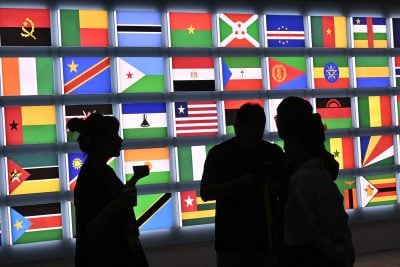The value of Sub-Saharan Africa’s goods trade grew by 9.7% in the first half of the year versus the first half of 2024, the world’s fastest rate, but US tariffs are likely to weigh on growth and intra-African trade still lags other regions, according to a report by logistics company DHL.
The firm’s Global Connectiveness Tracker, produced with the Stern School of Business at New York University, was released in the same week that DHL announced $300m investment in the continent. The report found that Sub-Saharan Africa’s exports drove the increase; the region recorded around 16% value growth in the first half of 2025 versus the first half of 2024, dwarfing circa 8% recorded by East Asia and the Pacific, the next fastest growing export region.
By contrast, the value of imports to sub-Saharan Africa grew by around 4%, compared to 9% for North America and 8% for the Middle East & North Africa.
Within the Sub-Saharan Africa region, the countries with the fastest trade value growth during the first six months of 2025 were Central African Republic, Zambia, Eritrea, Burkina Faso and Senegal, while the countries achieving the largest amounts of absolute trade growth in U.S. dollar terms were Ghana, Zambia, Côte d’Ivoire, Democratic Republic of Congo and Senegal.
“The current Sub-Saharan Africa trade growth forecast implies a substantial acceleration relative to the region’s trade volume growth trend since the Covid-19 pandemic,” the authors write.
US tariffs expected to hit trade
However, the report forecast that US tariffs are likely to have a marked impact on African trade. Sub-Saharan Africa’s trade volume is forecast to grow at a 4.3% annualised rate through 2029, rather than the 5.3% rate projected as of January 2025. That will still be world’s second-fastest trade volume growth, behind only South & Central Asia.
This year has seen tariffs ramped by on African countries and the expirty of the US’s longstanding African Growth and Opportunity Act (AGOA), which provided tariff-free access to the US market for dozens of African countries.
The past two decades have also seen a rising share of Sub-Saharan Africa’s international activity connecting the region to China and to China’s close allies (as classified by Capital Economics), However, the region still conducts more international activity with the United States and its close allies (which include major European economies) than it does with China and its close allies.
With research suggesting that trade with the US could decrease markedly as a result of tariffs and AGOA’s expiry, experts say that increasing intra-African trade could fill the gap.
Intra-African trade still lags
However, the report found that there is still plenty of room to grow intra-African trade.
Indeed, Sub-Saharan Africa stands out as one of the regions where countries trade over unusually long distances, with a low share of trade taking place within the region. In 2024, only 19% of the region’s trade was intra-regional, compared to a world average of around 50.7% (a new record low), and its trade flows traversed an average distance of 7074 km, compared to a world average of 5000km.
The countries that averaged the highest intra-regional share in 2024 were Eswatini, Lesotho, Mali, Botswana and Namibia, and the countries that averaged the lowest intra-regional share were Cabo Verde, Sudan, Ethiopia, Mauritania and Equatorial Guinea.
The tracker found some encouraging signs of activity – outward and inward greenfield FDI projects and outward and inward M&A transactions increased within Sub-Saharan Africa in the twenty years from 2004-2024.
However, goods exports within Sub-Saharan Africa increased by only a modest amount and goods imports within the region actually decreased, suggesting that the African Continental Free Trade Area has much work to do to bolster intra-African trade in goods.
Report author Steven Altman, a research assistant professor at NYU Stern, said that he remained optimistic about the long-term prognosis for intra-African trade.
“Long term I am optimistic that we’ll see more intra-African trade, but I think that’s really a long-term growth story. You have a set of economies that have been oriented much more to especially exporting with the rest of the world rather than with each other.
“It takes time to develop these trade links. There are policy developments that are favourable to intra-African trade – there’s the AFCFTA, which will take time to develop – but the steps are moving in that direction. But its also important to look at what’s happening sub-regionally – if you look at East Africa, West, Southern Africa, more of the regional trade will happen, especially among neighbouring countries.”
Want to continue reading? Subscribe today.
You've read all your free articles for this month! Subscribe now to enjoy full access to our content.
Digital Monthly
£8.00 / month
Receive full unlimited access to our articles, opinions, podcasts and more.
Digital Yearly
£70.00 / year
Our best value offer - save £26 and gain access to all of our digital content for an entire year!

 Sign in with Google
Sign in with Google 



